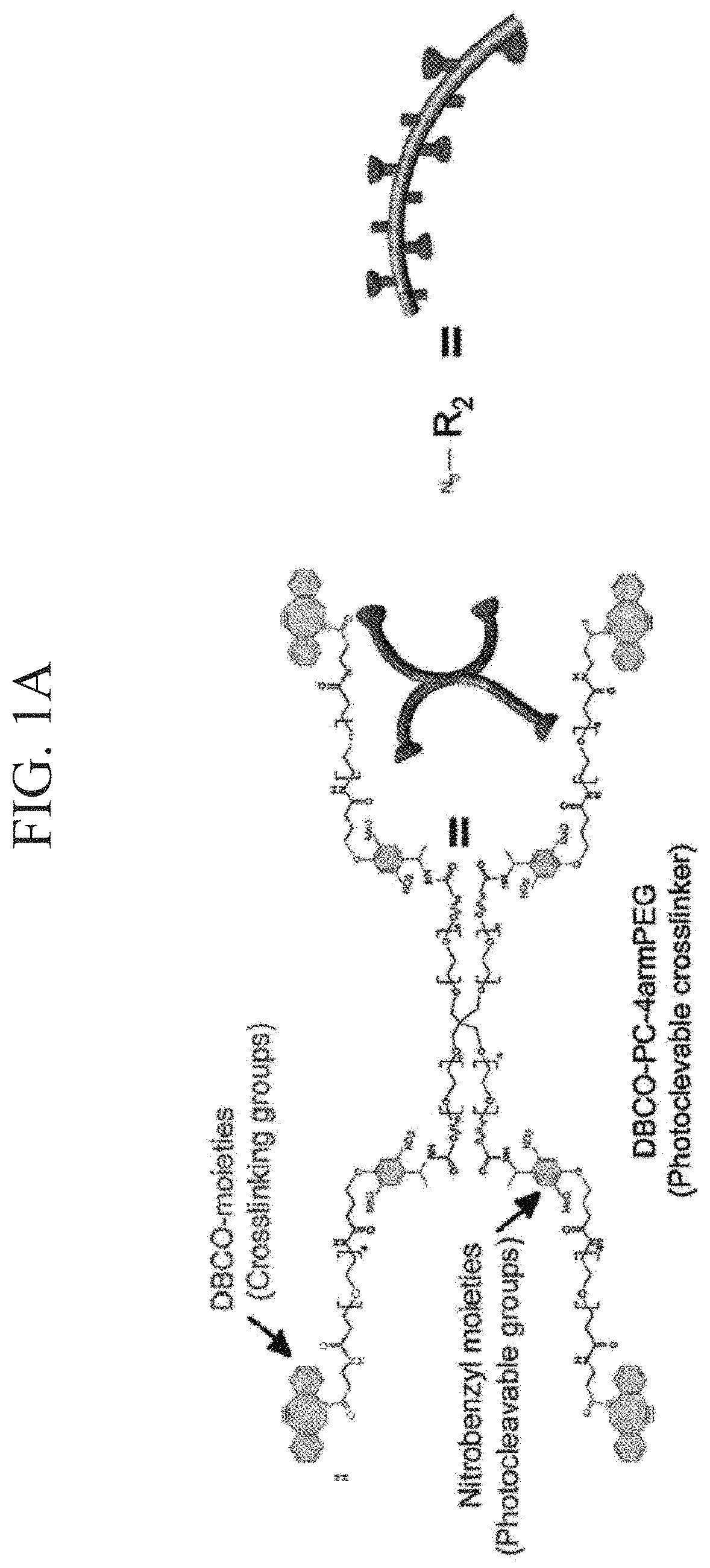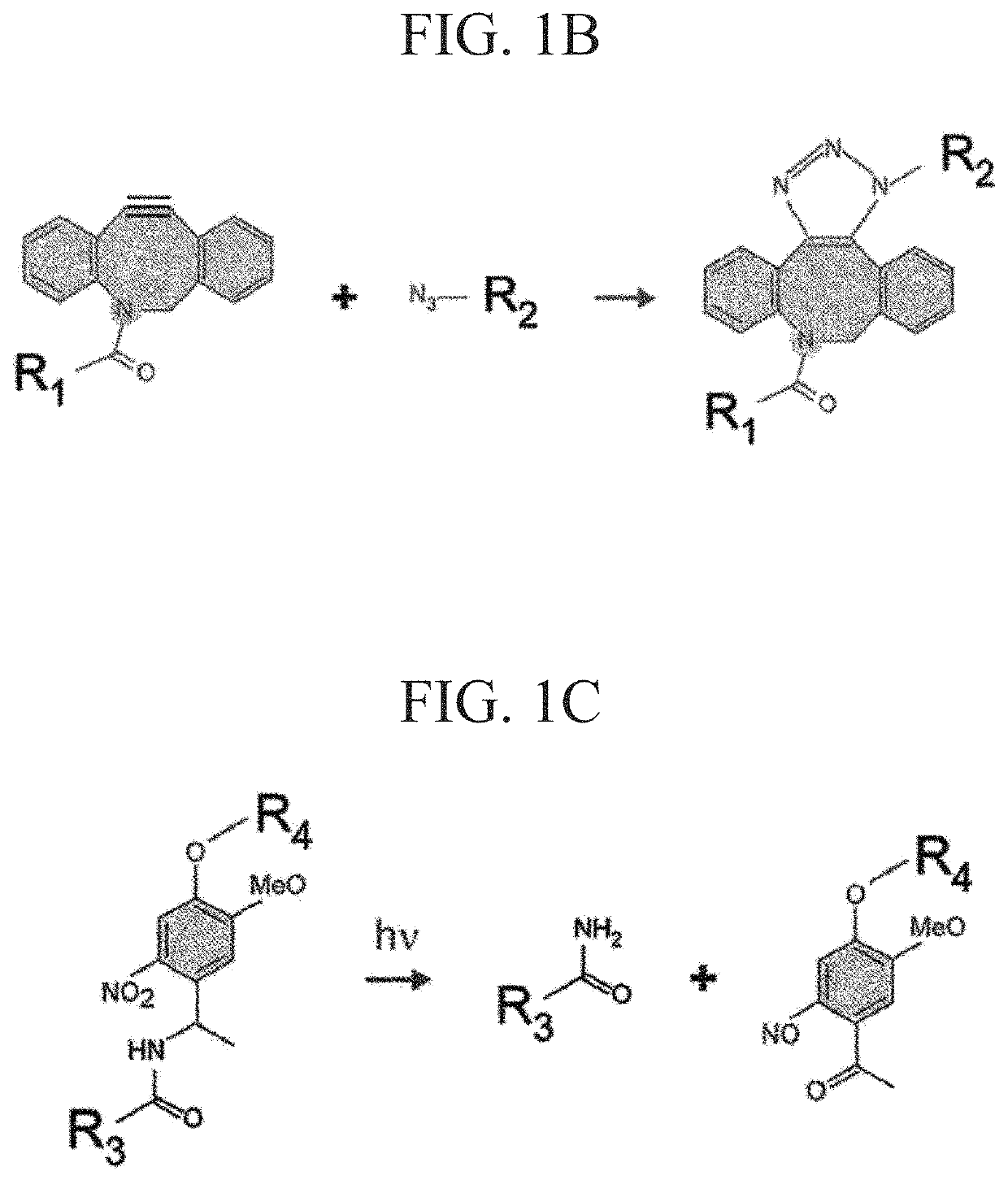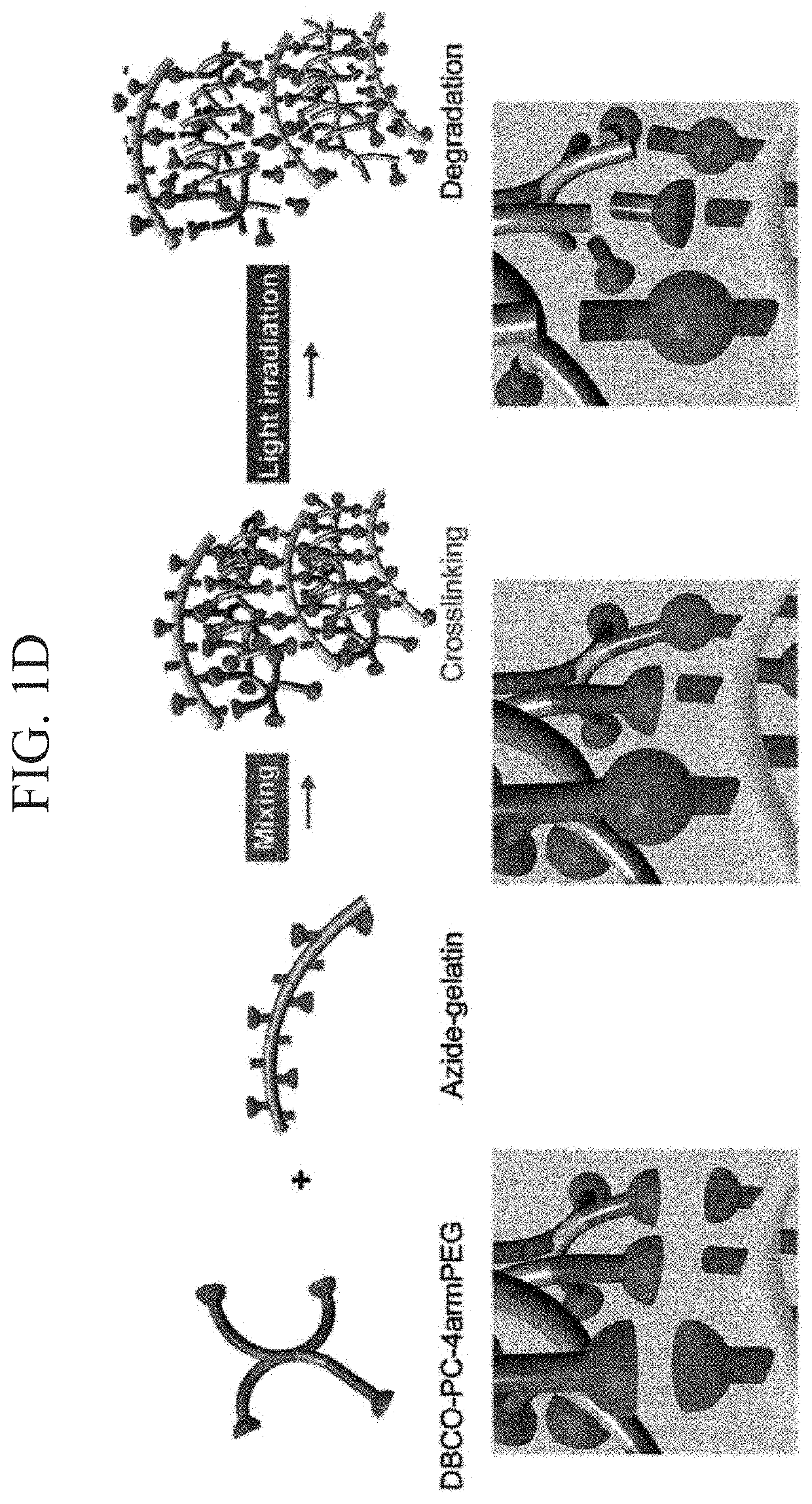Photodegradable hydrogel, culture device, method for forming tissue, and method for separating cells
a photodegradable hydrogel and culture device technology, applied in the field of material engineering, can solve the problems of reducing the use of such cultured cells, affecting the quality of life of the cultured cells, and affecting the expression of most functions in the body, and achieves less cytotoxicity, high viability, and reliable assays.
- Summary
- Abstract
- Description
- Claims
- Application Information
AI Technical Summary
Benefits of technology
Problems solved by technology
Method used
Image
Examples
example 1
of Azide-Modified Gelatin and Azide-Modified Matrigel
[0177]According to the following procedure, azide-modified Gelatin and azide-modified matrigel were synthesized to gelate Gelatin and Matrigel by click reaction (Formula 1).
[0178]Gelatin is a polymer of which water solubility increases by modifying collagen, which is a cell adhesion protein, with acid, alkali, heat, and the like, and maintains cell adhesiveness while being modified, and therefore is used as a substrate for cell culture as same as collagen. Gelatin is inexpensive compared to collagen, and therefore is frequently used for coating of a culture dish.
[0179]Azide-modified gelatin was synthesized by mixing gelatin and Azide-PEG4-NHS ester at a ratio shown in Table 1. A synthesis scheme is shown in Formula 1. Gelatin was dissolved in 300 mM HEPES buffer having a pH 7.4, Azide-PEG4-NHS ester was dissolved in 10 mM phthalic acid buffer (pH 4.0), and these were mixed and stirred at 37° C. for 2 hours. The reaction solution w...
example 2
on of Solubility of Azide-Modified Gelatin and Azide-Modified Matrigel
[0186]The solubility of azide-modified Gelatin and azide-modified matrigel was examined in 300 mM HEPES buffer (pH 7.4) (Table 5 and Table 6). It is known that if 25 mg / mL aqueous solution of gelatin is kept at 4° C. and 25° C., gelation occurs, but the solution dissolves at 37° C. On the other hand, it was checked that when gelatin was azide-modified to become azide-modified gelatin, gelation does not occur even when the 25 mg / mL aqueous solution was kept at 25° C. (Table 5). It is considered that this is because hydrophilicity of gelatin increased by the introduction of an azido group, by which water solubility of gelatin was improved. It can be said that a fact that mixing operation of the solution became possible at room temperature (25° C.) due to this improvement in hydrophilicity is an excellent property when preparing the photodegradable gel.
[0187]
TABLE 3Comparison of water solubility of gelatin and azide-...
example 3
of DBCO-PC-4ArmPEG
[0197]In order to synthesize a click crosslinking-type photocleavable crosslinker, DBCO-PC-4arm PEG, firstly, a photocleavable crosslinker NHS-PC-4arm PEG of an active ester-type was synthesized according to a method for introducing a nitrobenzyl group into an active ester terminal 4arm PEG described in NPL 6.
[0198]DBCO-PC-4armPEG was synthesized by reacting NHS-PC-4armPEG with DBCO-PEG4-amine. The synthesis scheme is shown in Formula 3. DBCO-PEG4-amine (600 mg) and NHS-PC-4armPEG (3.018 g) were added to 125 mL of dimethyl sulfoxide (DMSO) and heated at 40° C. and stirred. The reactant was precipitated in diethyl ether to be purified. First, the reaction solution was added dropwise to 1 L of diethyl ether and ice-cooled for 30 minutes. After removing the supernatant by decantation, the precipitate was dissolved in 10 mL of THF. Next, the reactant dissolved in THF was added dropwise to 400 mL of diethyl ether to obtain a precipitate. This ether precipitation was rep...
PUM
| Property | Measurement | Unit |
|---|---|---|
| wavelength | aaaaa | aaaaa |
| temperature | aaaaa | aaaaa |
| concentration | aaaaa | aaaaa |
Abstract
Description
Claims
Application Information
 Login to View More
Login to View More - R&D
- Intellectual Property
- Life Sciences
- Materials
- Tech Scout
- Unparalleled Data Quality
- Higher Quality Content
- 60% Fewer Hallucinations
Browse by: Latest US Patents, China's latest patents, Technical Efficacy Thesaurus, Application Domain, Technology Topic, Popular Technical Reports.
© 2025 PatSnap. All rights reserved.Legal|Privacy policy|Modern Slavery Act Transparency Statement|Sitemap|About US| Contact US: help@patsnap.com



